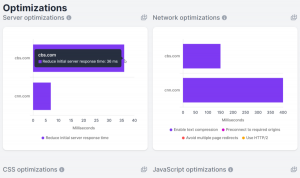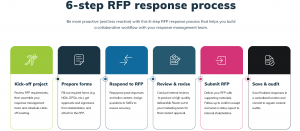 Do you know what you’re blogging and posting about next Saturday?
Do you know what you’re blogging and posting about next Saturday?
If your blog content strategy to date has been more of a last-minute thing, that’s okay. It’s never too late to switch to a more strategic stance.
Annual research by the Content Marketing Institute has found that marketers with a documented content strategy in place are more likely to:
- Consider themselves effective content marketers
- Justify higher marketing budget spend on content
- Feel their outreach strategy as a whole, including social media, is more effective
- Report a diminished sense of challenge at content marketing
Documenting a blog content calendar that includes social media outreach can help your organization shift from a brand who does custom content creation to a content brand. By determining in advance the topics you’ll be covering and sharing on your social channels, you can better map your publication to your inbound marketing goals, metrics, and overall strategy.
Here’s how to get started:
1. Research Your Buyer Personas
82% of today’s B2B decision makers report that industry-targeted content is a far more valuable resource. If your brand’s strategy to date has been highly general publications, you’re not doing yourself or your prospects any favors.
In fact, highly targeted content can deliver significantly more value at every stage of the buyer’s journey. It may be more likely to get found through keyword or social media searches when buyers develop awareness of their pain points or problems. Industry expertise could better guide the development of preference during the consideration stage. Finally, many buyers could be more likely to turn toward tailored tip sheets, comparisons, or highly specific tutorials when they make a decision.
In order to create and publish the right kinds of content, your brand needs to have a solid, data-driven understanding of your buyers. Know their demographics, firmographics (statistics ), and psychographic characteristics. Understand who they are as individuals, the organizations they work for, and what their motivations and needs are. The best places to get information for buyer persona development include:
- Demographic and firmographic factors from your company’s CRM software
- Implicit behavior on content consumption from your organization’s marketing software
- Insights on psychographic characteristics from sales team and customer interviews
2. Perform Topic Research
Several years ago, keyword research was a much different practice then it is today. Marketers were more likely to plug long tail phrases consisting of several keywords into a keyword grader and use this data to develop an understanding of the terms that were driving search. While this methodology is still valid, it’s not the only methodology you have to rely on.
The goal of topic and keyword research is to understand how your prospects think and perceive your industry. It’s to capture insight into the way they’re likely to describe their problems in the awareness stage of the buyers journey, and keep up on the trends that are just beginning to crest.
In addition to traditional keyword grader tools, marketers can derive invaluable information from the following sources:
- Social media networks: Try hashtag and tag searches on Twitter, Instagram, LinkedIn, and Tumblr
- Search trends tools: Google trends remains a free and easy-to-use mainstay
- Research tools: HootSuite and ContentDJ both offer automation around hashtag-driven searches
3. Pick a Content Calendar Tool
Some marketers prefer the super quick-and-nimble option of using Google spreadsheets or calendar to collaborate around content calendars. Others need the highly-structured approach to planning content that you’ll find in HubSpot’s content calendar tool or a project management software like Basecamp. Still others land somewhere in the middle, using any other number of branded tools or even Gantt charts to track campaigns and posting topics.
I might be in the minority, but I don’t think there’s necessarily a right or wrong answer on tools. The right content calendar tool for your organization’s content team is one that you’ll be able to collaborate around and remember to use consistently. Team sharing, editing permissions, and transparency can get increasingly important the larger and more spread-out your team is. For some companies with a high volume of contractors and freelancers, a robust solution could be critical.
When selecting a content calendar tool, take the following considerations into mind:
- Are there team members who need read-only or comment-only permissions?
- Does my organization have the need to provide limited content calendar access to clients?
- Do I need the ability to formally assign tasks to team members, or integrate with other tools (like billing or time-tracking software)?
- Do we need robust features, like accepting or acknowledging posting tasks?
- Does this tool offer me the ability to edit plans or tasks in a sufficiently quick and easy manner?
Creating a content calendar may seem overwhelming, but the benefits are immense. While planning your content around campaigns for the month to come is just one component of a well-balanced content strategy, it can pay dividends in team organization, transparency, and progress towards your key performance indicators.
image credit: joy/flickr/cc
(285)










